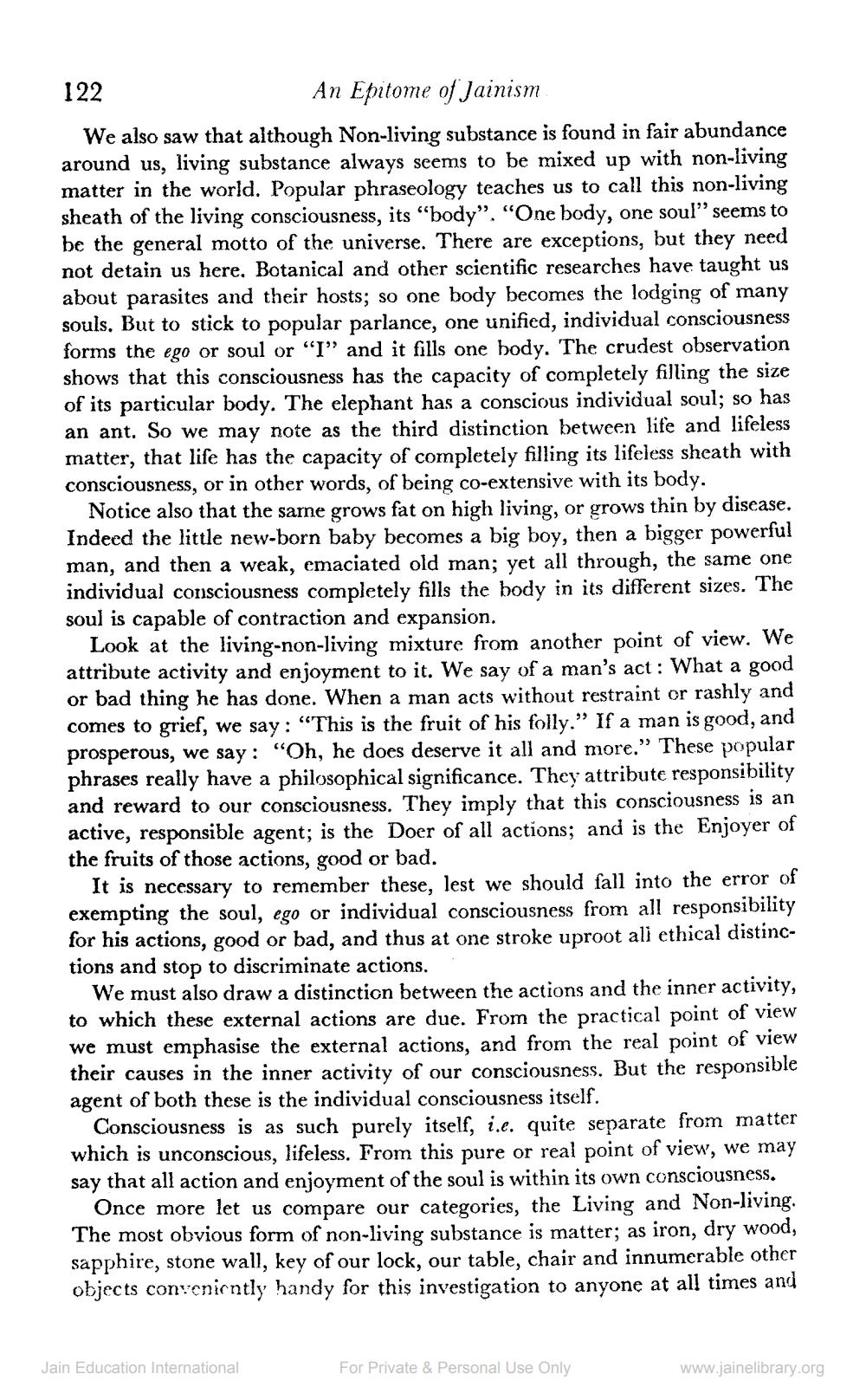________________
122
An Epitome of Jainism
We also saw that although Non-living substance is found in fair abundance around us, living substance always seems to be mixed up with non-living matter in the world. Popular phraseology teaches us to call this non-living sheath of the living consciousness, its "body". "One body, one soul" seems to
eral motto of the universe. There are exceptions, but they need not detain us here, Botanical and other scientific researches have taught us about parasites and their hosts; so one body becomes the lodging of many souls. But to stick to popular parlance, one unified, individual consciousness forms the ego or soul or “I” and it fills one body. The crudest observation shows that this consciousness has the capacity of completely filling the size of its particular body. The elephant has a conscious individual soul; so has an ant. So we may note as the third distinction between life and lifeless matter, that life has the capacity of completely filling its lifeless sheath with consciousness, or in other words, of being co-extensive with its body.
Notice also that the same grows fat on high living, or grows thin by disease. Indeed the little new-born baby becomes a big boy, then a bigger powerful man, and then a weak, emaciated old man; yet all through, the same one individual consciousness completely fills the body in its different sizes. The soul is capable of contraction and expansion.
Look at the living-non-living mixture from another point of view. We attribute activity and enjoyment to it. We say of a man's act: What a good or bad thing he has done. When a man acts without restraint or rashly and comes to grief, we say: "This is the fruit of his folly.” If a man is good, and prosperous, we say: "Oh, he does deserve it all and more.” These popular phrases really have a philosophical significance. They attribute responsibility and reward to our consciousness. They imply that this consciousness is an active, responsible agent; is the Doer of all actions; and is the Enjoyer of the fruits of those actions, good or bad.
It is necessary to remember these, lest we should fall into the error of exempting the soul, ego or individual consciousness from all responsibility for his actions, good or bad, and thus at one stroke uproot ali ethical distinctions and stop to discriminate actions.
We must also draw a distinction between the actions and the inner activity, to which these external actions are due. From the practical point of view we must emphasise the external actions, and from the real point of view their causes in the inner activity of our consciousness. But the responsible agent of both these is the individual consciousness itself.
Consciousness is as such purely itself, i.e. quite separate from matter which is unconscious, lifeless. From this pure or real point of view, we may say that all action and enjoyment of the soul is within its own consciousness.
Once more let us compare our categories, the Living and Non-living. The most obvious form of non-living substance is matter; as iron, dry wood, sapphire, stone wall, key of our lock, our table, chair and innumerable other objects conveniently handy for this investigation to anyone at all times and
Jain Education International
For Private & Personal Use Only
www.jainelibrary.org




